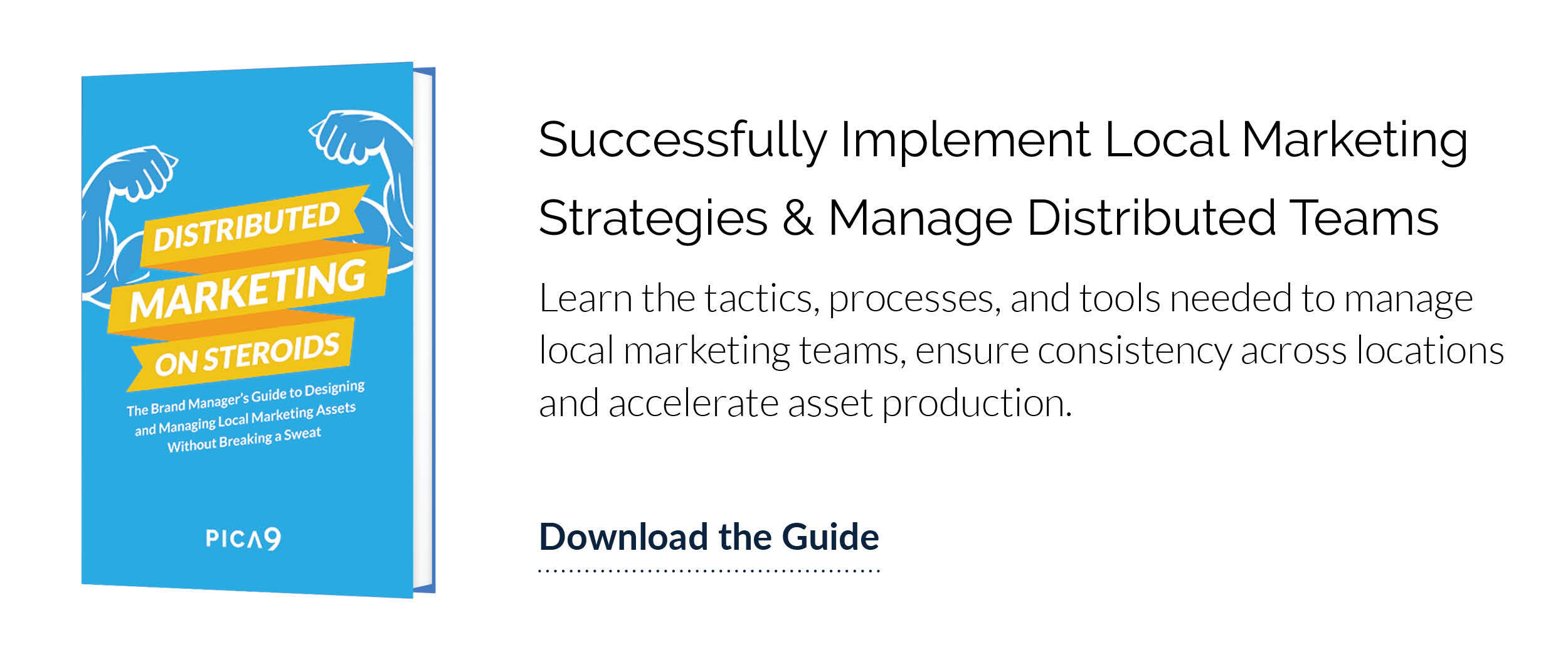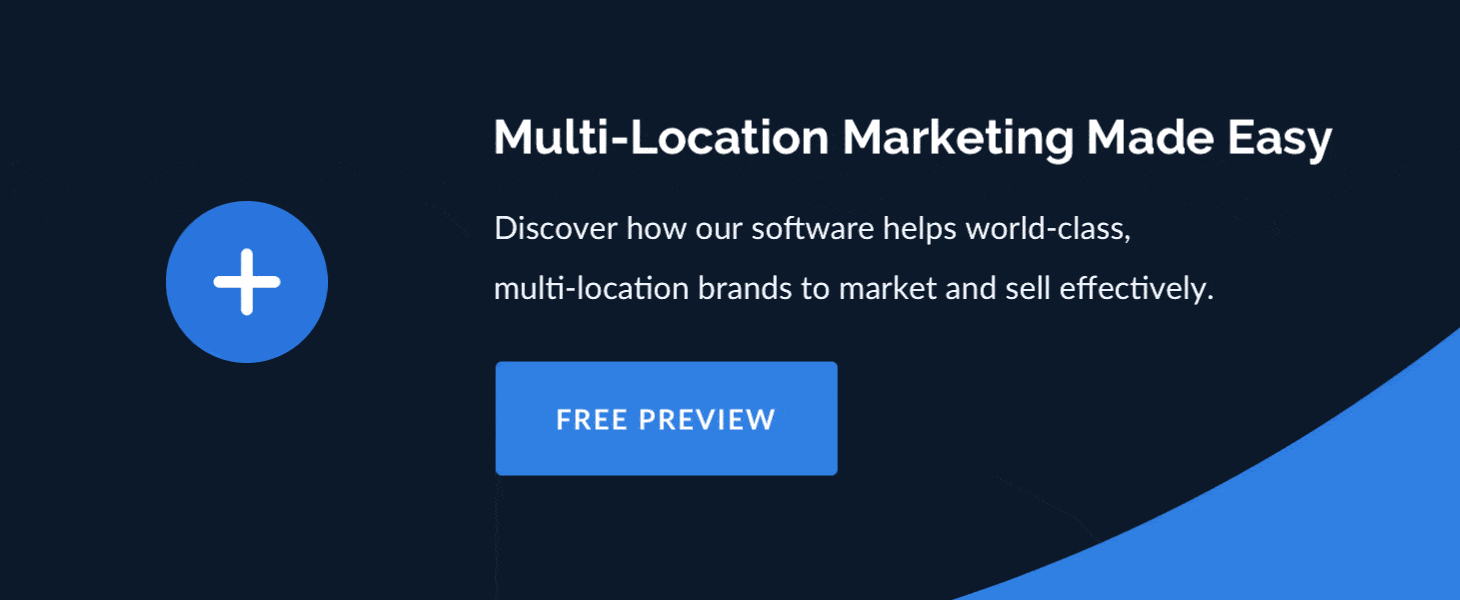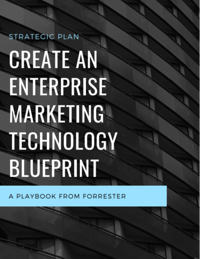As a brand manager at a multi-location organization, one of the greatest challenges you face is keeping everyone up-to-date and on the same page with marketing. That's where a Digital Asset Management (DAM) system comes into play. These solutions act as the central command center for all of your brand's most important marketing assets.
So what makes a DAM different when you're at a company with lots of locations? It just so happens you might need something totally different from your DAM if you're at one of those brands – in fact, you might need more than one DAM to get the job done! Standalone DAMs are a foundation in these cases – they're products that house a brand's digital assets in an online repository, enabling corporate teams to keep track of the hundreds or thousands of files that get produced in the design process. But more than just a repository of assets, today's top distributed brands need systems that help them handle local marketing at scale across all of their locations. When distributed brands leverage the power of DAMs that have been built specifically for their needs, they improve their whole marketing operation. From the corporate level down to the local affiliate, distributed DAMs deliver asset distribution which, in turn, improves productivity and drives local marketing success. The best distributed DAM systems support:
- Productivity & Asset Accessibility
- Asset Quality & Compliance
- Collaboration
- Metrics & Reporting
But with so many different kinds of DAM solutions out there, how do brand managers know which software will be most effective for their store network?
To begin, pay close attention to the following six top features of any distributed DAM.
Top Features of a Distributed DAM Solution
#1. Categorization
What is categorization within a distributed DAM? Categorization is the way that marketing assets which are visible to the user are organized so that they are easy to browse for. The features a DAM system provides for categorizing assets are important because they can allow you to provide easy, searchable access to crucial marketing assets for your whole brand. Giving local affiliates accessible file organization helps make sure those local users can find what they're looking for without throwing up their hands in frustration. In a lot of ways, that means your brand can stay on track when creating new campaigns or assets, and still not worry about brand compliance in the field.
Categorization often takes the form of organizing assets into groups by language, asset type, color, file format, campaign date/expiration etc. By categorizing these assets in a way that everyone can understand, local affiliates can effortlessly find assets based on their own specific criteria. Searching for assets doesn't feel tedious any more, which makes the local users more satisfied and gives a boost to internal efficiency for your teams at HQ.
#2. Segmentation
Segmentation within the distributed DAM is another key function of these systems. This allows corporate marketing teams to set clear rules and permissions at an asset-by-asset level to guarantee proper use. For brand managers, “protecting” the brand is the top priority, and setting permissions for who can find and use assets pretty much always stops potential brand compliance issues.
For a distributed DAM this kind of close-controlled segmentation goes further than many "traditional" DAM systems. In many cases, local affiliates will actually want to upload new files to use in their own marketing or to use the DAM system as a place for them to store files. Distributed DAMs give corporate teams the ability to monitor and regulate how and where these assets can be used, including the ability to specify the geographic scope and usage rights for such assets. Simply put, the ability to segment at this fine-grained level of control helps corporate teams manage what local affiliates can and can't do.
#3. Templates
Local affiliates are often responsible for doing their own marketing across various channels. To stay compliant, all the advertising and collateral they produce needs to feel like a reflection of the parent brand. Distributed DAM software equips local marketers, especially those who do not have the skills to do design on their own, with a repository of easy-to-use and accessible templates. Enterprise brands need a system that will let them create these templates to provide local affiliates with brand compliant material that they can modify to fit their specific needs.
The level of flexibility provided by these templates is usually unique in distributed DAM systems. In a distributed DAM, templates account for complex design principles and even extra layers of business logic that allow marketers to pre-specify all kinds of things, including adaptive layouts, dynamic sizing, user-formatting controls and more. By utilizing these templates, local affiliates become more consistent and efficient marketers. Additionally, corporate designers are less weighed down by one-off requests from locals.
#4. Integrations
If affiliates, franchisees or dealers don't have access to the right combination of tools to accomplish marketing initiatives at the local level, they won't achieve the brand's goals for them. Extra add-ons and integrations that can be incorporated into a distributed DAM include email sending/tracking, web hosting, CRM and project management tools. By adding in these integrations, users are able to pull in data to expand the capabilities of the system.
For example, true distributed DAM tools like CampaignDrive (also called Local Marketing Automation systems) can easily connect with many different kinds of DAM systems. When integrated into an external DAM system, corporate design teams can simply upload their assets into the DAM and they will be added to CampaignDrive automatically.
With 18 brands and 3,600 properties, Marriott needed a tool to help them deliver local marketing excellence across the franchised network. Check out the full case study to learn more.
#5. Content Management
Within the distributed DAM, content management capabilities allow marketers to store and utilize all kinds of marketing content that can be used across all their localized marketing communications. Distributed DAM systems provide access to a robust system for managing all of this marketing content which sets them apart from other DAMs. This lets marketing teams do everything from making one-click updates to creative assets like logos, all the way to creating complex, interlinked and data-driven concepts such as menu item prices.
Another advantage of the content management capabilities a distributed DAM provides are the rights management features. Rights management allows teams to monitor and regulate contributor's rights including copyrights, trademarks and more. It will also specify an expiration date or key timeframe in which the asset is accessible. This helps marketers to specify when assets should be used and how they should be used. Ideally, the DAM will automatically recognize any restrictions associated with particular assets and either bar local affiliates from using them or grant them access, depending on their status.
#6. Tailored Workflows
Teams at the home office all have a different approach to asset management. Design teams prefer to work one way, while marketing teams are used to following a different process. Regardless of the approach, miscommunication is common without a consistent, streamlined approach. It can be frustrating for both the brand and the local affiliate if these processes aren't fully followed across the whole brand. However, with tailored workflow settings in distributed DAM systems, marketers can match the way the system works to how their company does its business.
The most effective distributed DAM solutions allow marketers to configure the tool to meet their existing or desired workflow. To make adoption easy and improve overall satisfaction for local affiliates, the best DAM solutions allow users to build a uniquely customized experience. This means deciding who at HQ is designated as the approver for certain campaigns, and how many steps affiliates should go through to find select the assets they want to use. This all helps local affiliates get up to speed more efficiently and allows enterprise teams to take control. The result? Increase operational efficiency, accountability and improved adoption across the whole network.
Improve Operational Efficiency With DAM Software
When it comes to speed, security and scale, distributed DAM software can help drastically improve the operational efficiency of many multi-location companies. Thanks to many of the features described above, marketers can use DAM software like this to unify local and corporate teams around a shared brand mission. As a result, brands can be confident that their marketing initiatives will be executed well at every level. With DAM, top distributed teams can achieve consistent branding, improved customer experiences, increased employee satisfaction and great local marketing campaigns that excite and engage consumers.
When it comes to finding new ways to implement local marketing that drives better results, it doesn't have to be so "DAM" complicated. The right distributed DAM can improve local performance and give corporate marketing teams the greater control over their networks they're looking for.
CampaignDrive by Pica9 helps multi-located brands support and empower local affiliates through a centralized distributed marketing platform.






